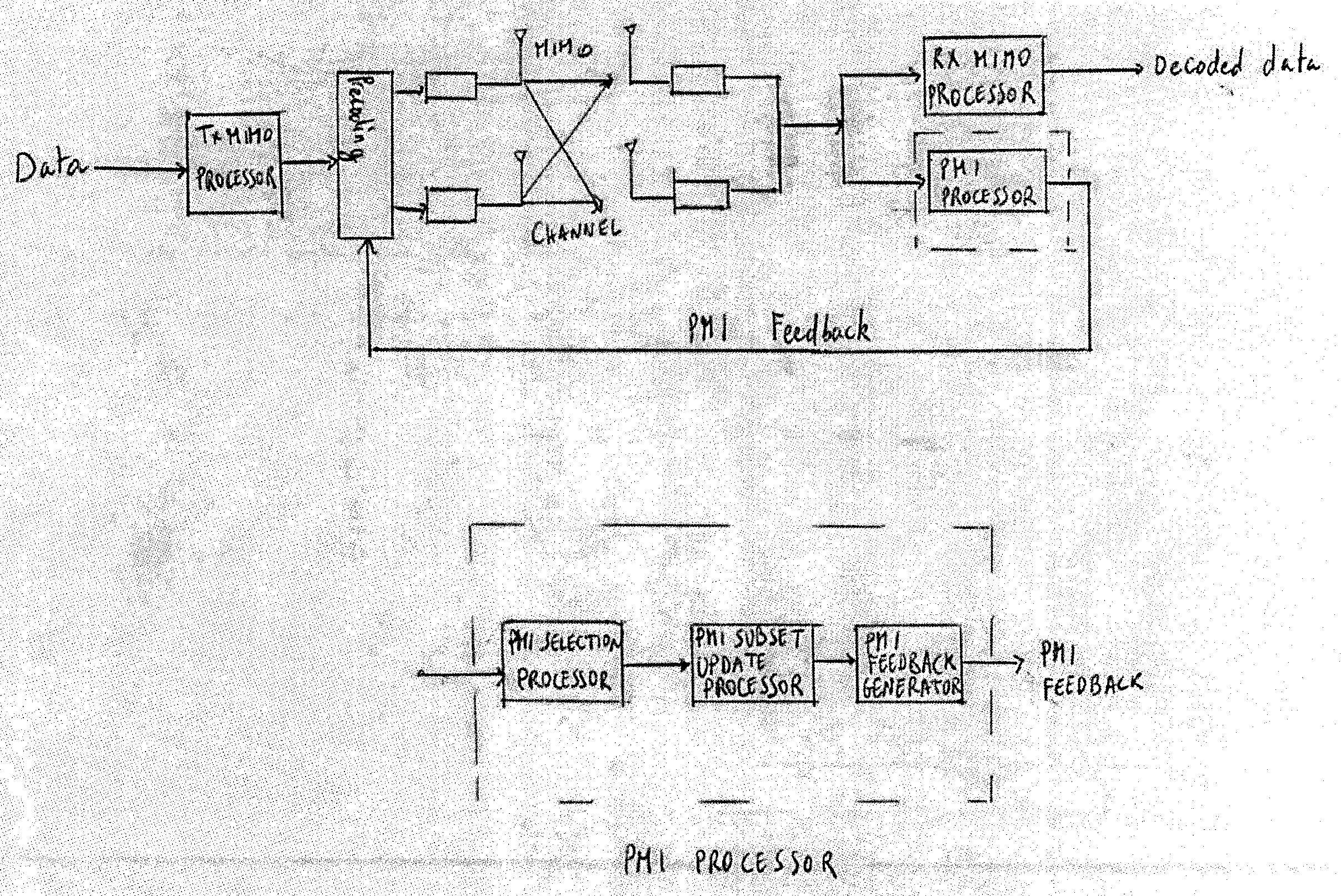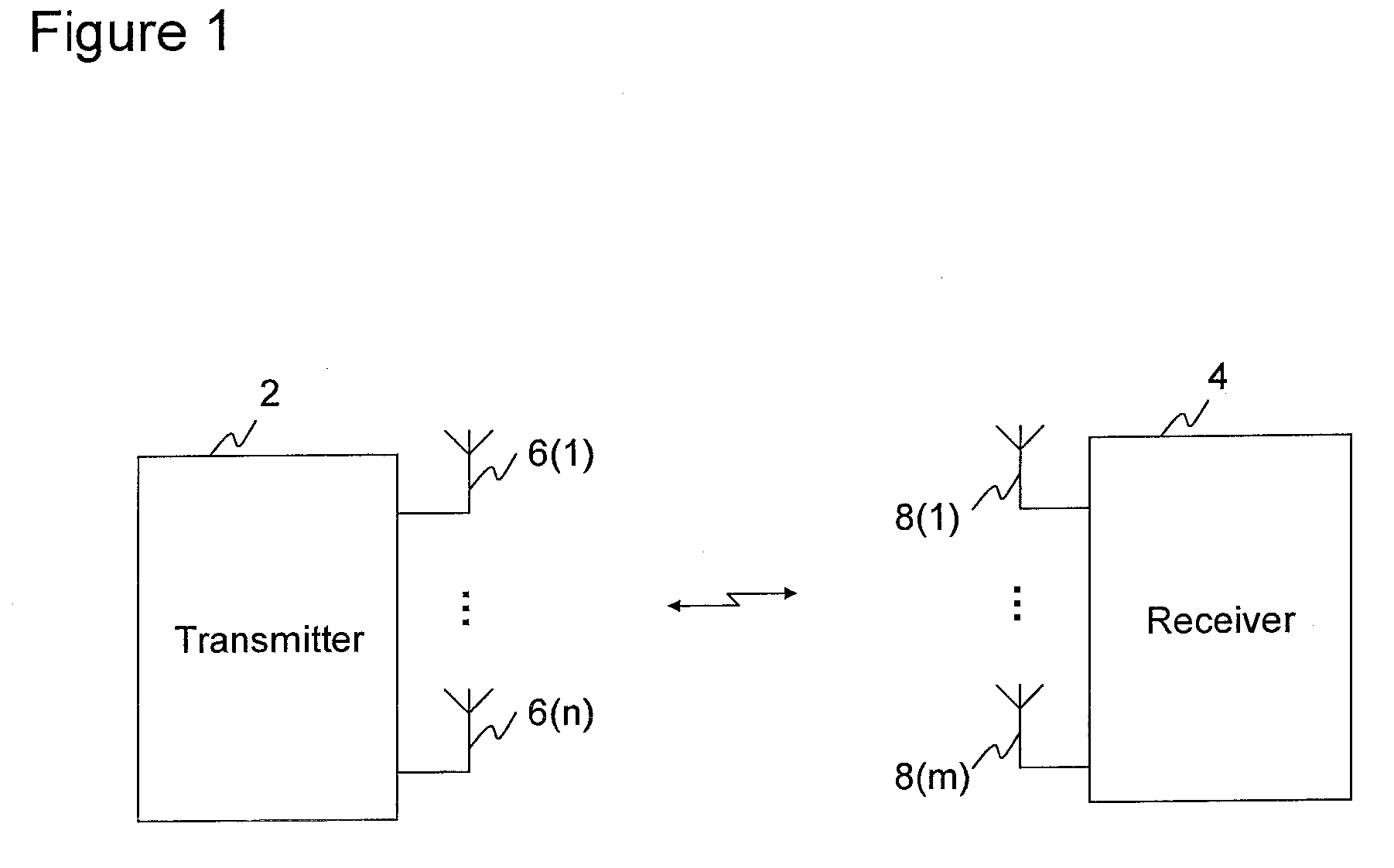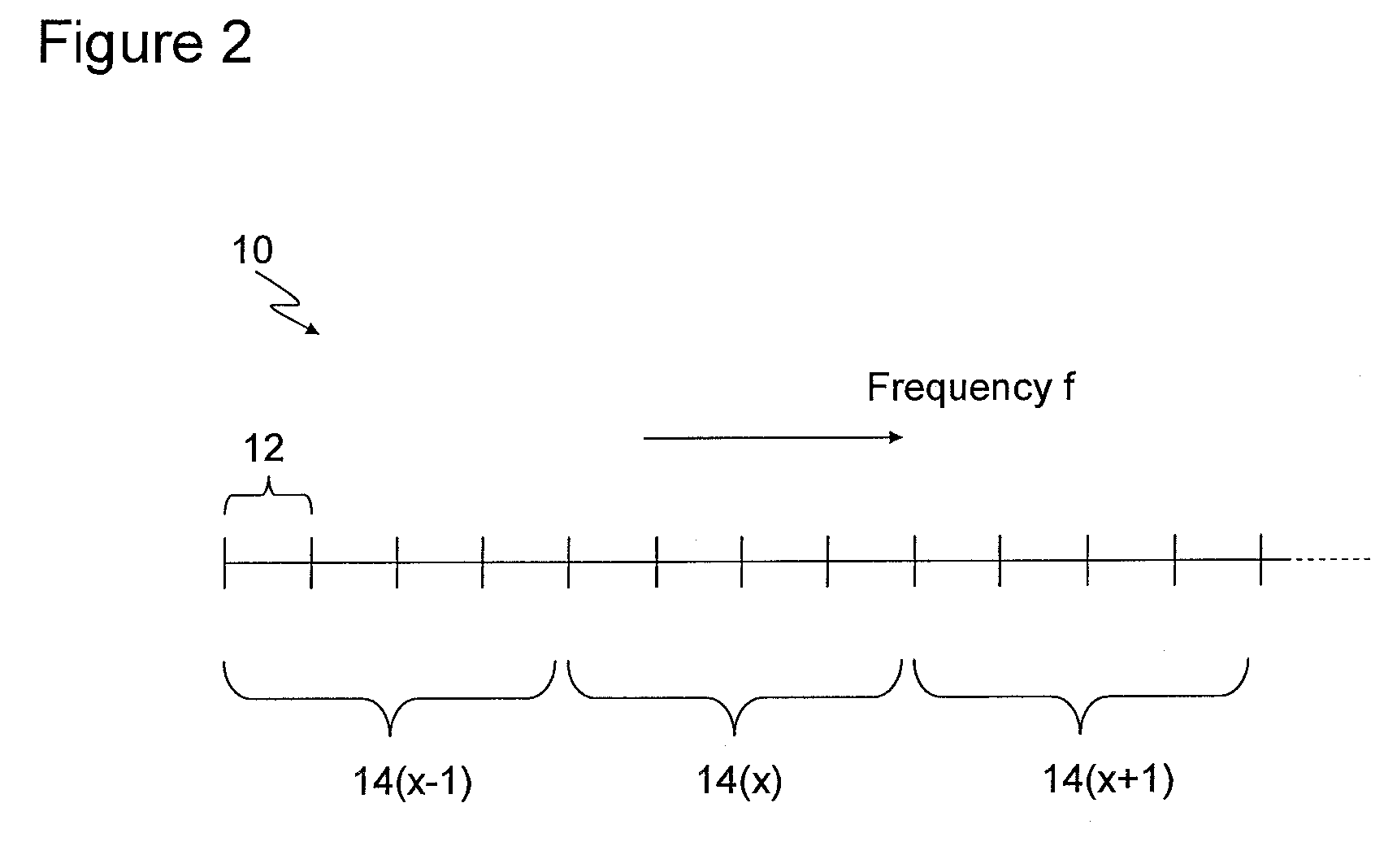System and method of wireless communication
a wireless communication and wireless communication technology, applied in the field of precoding information feedback, can solve problems such as prone to error propagation and differential encoding schemes, and achieve the effect of reducing the overhead of this pmi feedback
- Summary
- Abstract
- Description
- Claims
- Application Information
AI Technical Summary
Benefits of technology
Problems solved by technology
Method used
Image
Examples
second embodiment
[0113]the invention resorts to the above idea to build the subset of preferred precoding matrices to be used to compress the precoding information. In other words, the receiver computes the transition probabilities, i.e., the probability that the current channel precoding matrix index is j, knowing that the previous (in time) precoding matrix index is i. These transition probabilities are then used to determine the subset of precoding matrices that are more likely to be chosen as preferred precoding matrices after a given precoding matrix. The reduction of the original codebook to this subset of precoding matrices corresponds to a reduction of the number of bits required to signal the new precoding index.
[0114]With this scheme, the most likely precoding matrices in the future channel realization are determined for each precoding matrix from the steady-state transition probabilities. In an OFDM system, where the precoding matrix information needs to be sent with a specified frequency...
third embodiment
[0117]In a third embodiment, the receiver 4 may signal to the transmitter 2 the specific subsets that the receiver intends to use for PMI compression. As discussed above, the receiver determines a subset of matrices in order to encode the PMI as one of that subset, thus compressing the PMI information because it requires fewer bits to encode than if encoded as one of the whole set. In embodiments of the present invention, this subset could be the most-correlated subset or the most-probable subset (i.e. the transition based subset).
[0118]In prior systems, compression is performed using the most-correlated subset and it requires both the transmitter and the receiver to pre-compute the correlation (based on the known codebook) so that the transmitter knows how to decode the compressed PMI indication fed back from the receiver. However, there is a problem with this in that the requirement for total pre-computation makes the system unable to follow the actual current channel characterist...
fourth embodiment
[0122]In a fourth embodiment, the receiver 4 indicates to the transmitter 2 the preferred size of the codebook subset to be used for PMI compression. This has the advantage again of making the system more flexible to channel conditions. If the size was not reported by the receiver, the transmitter would simply have to have predetermined knowledge of a fixed subset size, whereas if the size is reported by the receiver then the subset size can vary depending on channel conditions.
[0123]Again, this indication could be transmitted from the receiver to the transmitter as part of the PMI report or by means of another control signalling mechanism. Also, as an example of order-of-magnitude, it may need only be transmitted perhaps once every few seconds (compared with a frame length of the order of 1 ms).
[0124]The feature of transmitting the size of the preferred subset from the transmitter can be used independently of any of the first, second or third embodiments or in conjunction with any ...
PUM
 Login to View More
Login to View More Abstract
Description
Claims
Application Information
 Login to View More
Login to View More - R&D
- Intellectual Property
- Life Sciences
- Materials
- Tech Scout
- Unparalleled Data Quality
- Higher Quality Content
- 60% Fewer Hallucinations
Browse by: Latest US Patents, China's latest patents, Technical Efficacy Thesaurus, Application Domain, Technology Topic, Popular Technical Reports.
© 2025 PatSnap. All rights reserved.Legal|Privacy policy|Modern Slavery Act Transparency Statement|Sitemap|About US| Contact US: help@patsnap.com



